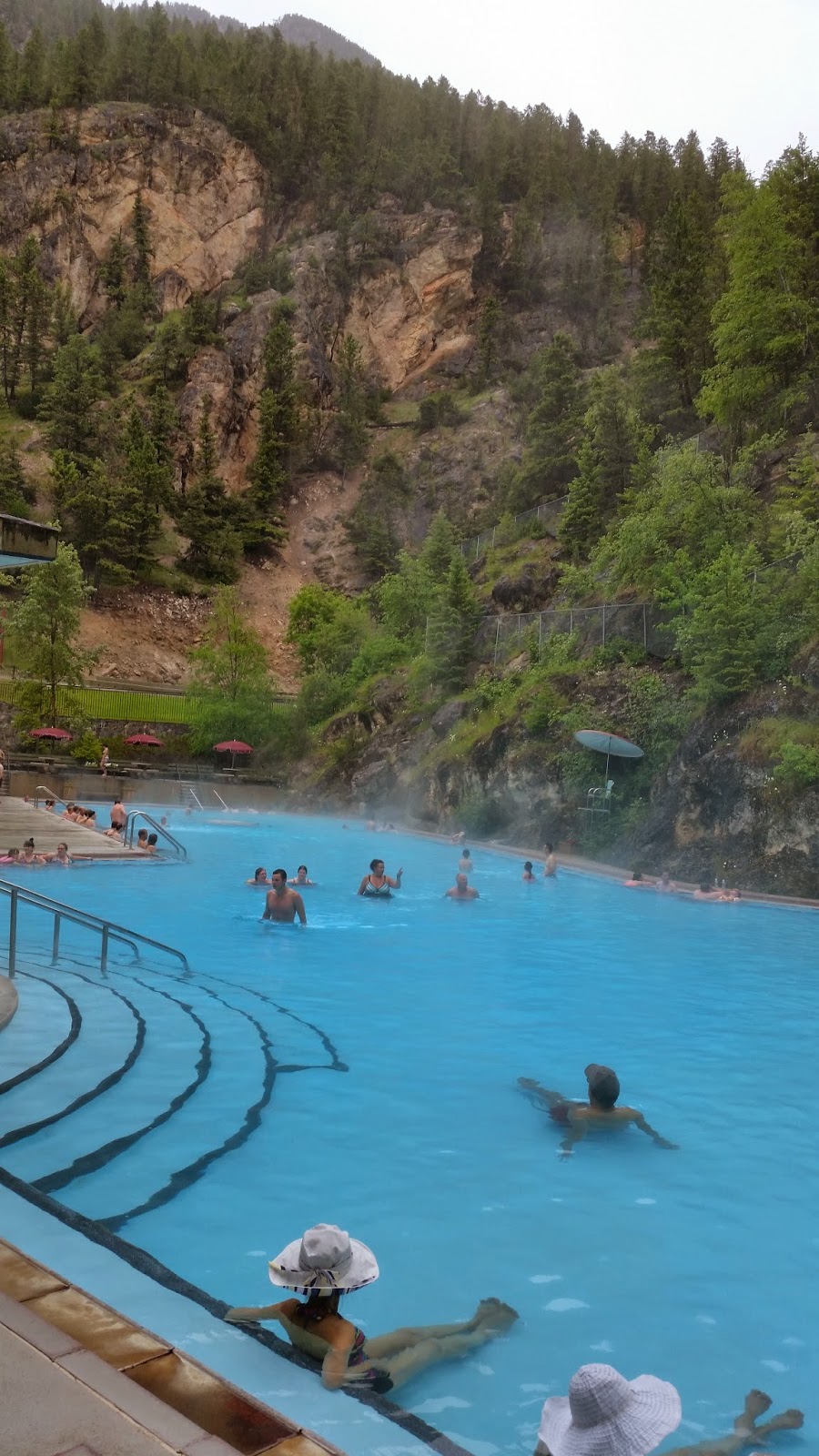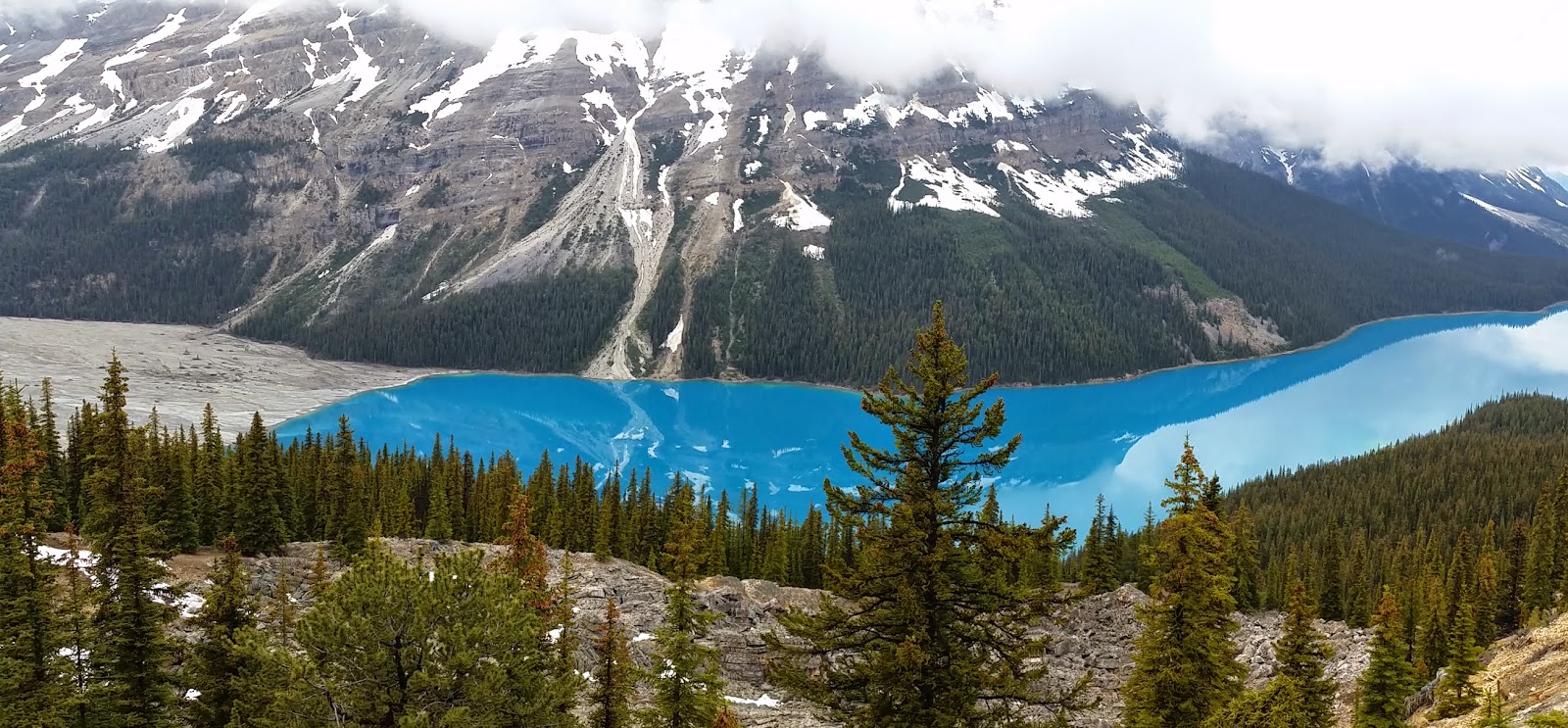June 23 - 30, Days 16 - 22
We continued on north from Ft. Nelson to our next
destination which was ~75 miles away. No
need to overdo it, right? On this 75
mile stretch, we saw more black bears, stone sheep (which are different than
big horn sheep), and moose.
The highway you see in the picture with the moose is the
Alaska Highway. So far, not a bad road
at all, but the chip and seal surface does produce a little road noise. We stopped at the Tetsa River Services &
Guest Ranch, where their claim to fame is delicious homemade cinnamon rolls. The rolls are about 6” in diameter, about 3”
thick, and served warm with the icing melting down through it. While they were great, I understand the
daughter of a friend of mine also makes great homemade cinnamon rolls, so I
will wait until I sample hers before I declare “The World’s Best”!
We arrived at the Summit Lake Campground of Stone Mountain
Provincial Park. Their provincial parks
are much like our state parks, except theirs have no electric. Since we arrived just after lunch, we had our
choice of campsites. We could back right
up to the water of this serene lake and enjoy the tranquility of the
surrounding area. Once set up, we hiked
~1.5 miles to the summit on a very rugged, rocky trail, crossing through a
stream.
Summit hikes are never disappointing.
Since we only drove 75 miles yesterday, we thought we should
go a little farther today. So, we drove
85 miles to MacDonald Campground of Muncho Lake PP, seeing more stone sheep
along the road. Since we drove ‘so much
farther’ we decided to stay 2 nights at Muncho Lake. Each campsite is right on the aquamarine
colored lake.
It has been a little hard to get used to the amount of
daylight. Here is a picture from our
campsite at 10:45PM
Our next stop on our trek north is Liard Hot Springs PP;
about 54 miles from Muncho Lake. There were several signs warning motorists
about wildlife on the highway. We saw
more black bears eating the tender, new spring grass along the highway, and seemed
rather indifferent that we pulled off the road and stopped less than 10 yards
away from them. As we continued on, we
encountered this guy resting at the edge of the pavement.
So close that I had to cross the center line to keep from
being too close to him.
Liard Hot Spring is yet another natural mineral hot spring but
its distinguishing feature was a completely natural setting with a gravel
bottom and lush, green vegetation growing right down to the water.

The temperature of the water in the upper pool near the
source of the water is ~126°, too hot for us, so we went to the lower pool
where the temperature is said to be about 112°.
Unfortunately, the downside of this heat, humidity, and vegetation is
the perfect environment for the Canadian and Alaskan state bird; the mosquito.
None the less, we could visit the hot spring
24 hours per day for as long as we wanted; in my case, about 15-20 minutes.
Leaving Liard Hot Springs behind, we pressed on towards
Watson Lake, Yukon Territory where there is a “sign post forest” started by a
soldier in WWII and where the village encourages people to keep adding to the
sighs. To date, there are over seventy
six thousand signs.
Our next stop is near Whitehorse, Yukon Territory where we
stayed in a government campground for $12/night including all the firewood you
want to burn. This was on Marsh Lake
which also had a beach. However, it was
a bit different from the white sand beaches of Gulf Shores as it was more dirt
than sand. Also, the water temperature
was ~60°, the air temperature was ~58°, and it was very windy. But that did not stop people from playing on
the beach or swimming in the water. Not
just any people, but the rugged souls of the Yukon Territory. Whitehorse is the capitol of the YT, so we
will spend some time there so we can get more supplies and post to our blog.
OBSERVATIONS (from unscientific data), and other facts:
Out of 10 rvs, there are:
·
2 class C motorhomes
·
2 fifth wheels
·
2 travel trailers
·
2 slide on truck campers
·
1 pop up tent camper
·
1 class A
Out of 10 pickup trucks that
tourists use to pull their rvs:
·
5 are Ford
·
3 are Dodge
·
2 are GM (Chevy and GMC)
·
All are 4x4 and 9 out of 10 are diesel






























